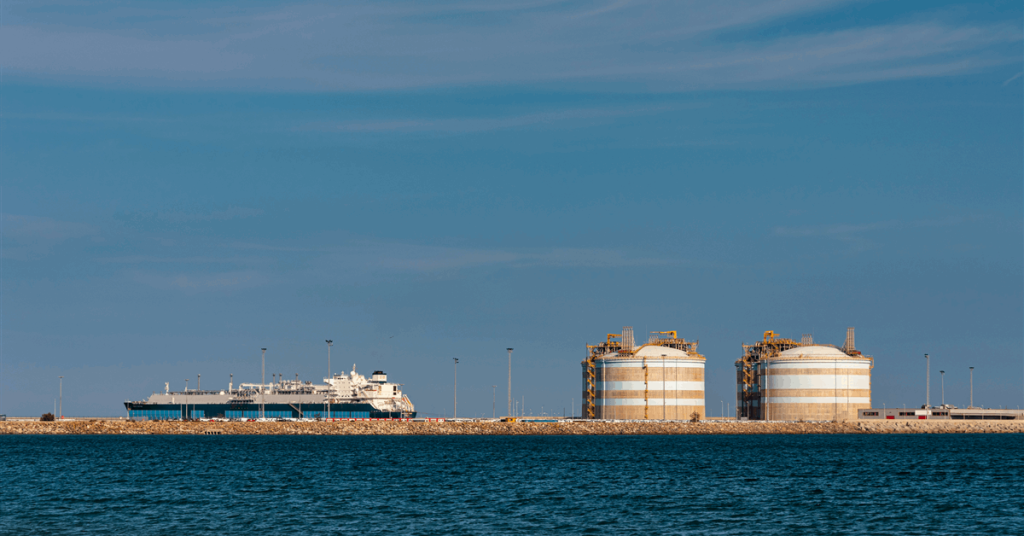Staff at the Federal Energy Regulatory Commission (FERC) has issued a final supplemental environmental impact statement (SEIS) for Glenfarne Group LLC’s Texas LNG project.
Texas LNG already holds Energy Department permits to export up to four million metric tons a year, or 204.4 billion cubic feet a year of natural gas equivalent, to FTA and non-FTA countries. The authorizations were issued September 2015 and February 2020 respectively.
The project consists of a new LNG terminal on the north side of the Brownsville Ship Channel, 2.5 miles southwest of the Town of Port Isabel and 19 miles northeast of the City of Brownsville. It is designed to have two liquefaction trains. Feed gas would be delivered via a planned third-party pipeline, according to the proposal to FERC.
The new SEIS issued last week was in response to a second remand by the Court of Appeals for the District of Columbia Circuit in August 2024 of FERC’s authorization of the project. In that order the court vacated FERC’s authorization issued April 2023 because the Commission had not issued a SEIS.
In March 2025 the court modified its August 2024 order and issued a remand without vacatur.
In the new SEIS, “Commission staff conclude that… communities in the areas near the terminal may experience significant cumulative visual impacts”, FERC said in a statement on its website.
“Specific to air quality impacts, we clarify that the project’s air quality impacts on communities with environmental justice concerns would also be disproportionate and adverse; however, these impacts would be less than significant.
“For all other resources, FERC staff continues to conclude that approval of the project would result in less than significant impacts, with implementation of the environmental conditions set forth in the Commission’s prior authorizations for the project, and the additional mitigation measures recommended in the final supplemental EIS.
“The Commission will take into consideration the analysis and conclusions of the final supplemental EIS in its further merits order for the project”.
Glenfarne, an energy infrastructure developer based in New York and Houston, said in a statement on the new SEIS that it expects FERC to grant its final clearance for the project in November. The company still aims to make a FID (final investment decision) by year-end.
“Texas LNG has secured customer offtake commitments from EQT Corp., Gunvor Group, Macquarie Group and one of Europe’s leading utilities in a volume sufficient for achieving final investment decision”, Glenfarne said.
Kiewit won the engineering, procurement and construction contract last year.
“The FERC final supplemental EIS for Texas LNG strengthens an already robust record of federal analysis and support and confirms the basis for the existing authorization for this project”, said Glenfarne chief executive and founder Brendan Duval.
“Texas LNG’s ‘green by design’ strategy uses electric motor drives to power the facility, making it one of the lowest-emitting liquefaction facilities in the world”.
To contact the author, email jov.onsat@rigzone.com
Generated by readers, the comments included herein do not reflect the views and opinions of Rigzone. All comments are subject to editorial review. Off-topic, inappropriate or insulting comments will be removed.
element
var scriptTag = document.createElement(‘script’);
scriptTag.src = url;
scriptTag.async = true;
scriptTag.onload = implementationCode;
scriptTag.onreadystatechange = implementationCode;
location.appendChild(scriptTag);
};
var div = document.getElementById(‘rigzonelogo’);
div.innerHTML += ” +
‘‘ +
”;
var initJobSearch = function () {
//console.log(“call back”);
}
var addMetaPixel = function () {
if (-1 > -1 || -1 > -1) {
/*Meta Pixel Code*/
!function(f,b,e,v,n,t,s)
{if(f.fbq)return;n=f.fbq=function(){n.callMethod?
n.callMethod.apply(n,arguments):n.queue.push(arguments)};
if(!f._fbq)f._fbq=n;n.push=n;n.loaded=!0;n.version=’2.0′;
n.queue=[];t=b.createElement(e);t.async=!0;
t.src=v;s=b.getElementsByTagName(e)[0];
s.parentNode.insertBefore(t,s)}(window, document,’script’,
‘https://connect.facebook.net/en_US/fbevents.js’);
fbq(‘init’, ‘1517407191885185’);
fbq(‘track’, ‘PageView’);
/*End Meta Pixel Code*/
} else if (0 > -1 && 68 > -1)
{
/*Meta Pixel Code*/
!function(f,b,e,v,n,t,s)
{if(f.fbq)return;n=f.fbq=function(){n.callMethod?
n.callMethod.apply(n,arguments):n.queue.push(arguments)};
if(!f._fbq)f._fbq=n;n.push=n;n.loaded=!0;n.version=’2.0′;
n.queue=[];t=b.createElement(e);t.async=!0;
t.src=v;s=b.getElementsByTagName(e)[0];
s.parentNode.insertBefore(t,s)}(window, document,’script’,
‘https://connect.facebook.net/en_US/fbevents.js’);
fbq(‘init’, ‘1517407191885185’);
fbq(‘track’, ‘PageView’);
/*End Meta Pixel Code*/
}
}
// function gtmFunctionForLayout()
// {
//loadJS(“https://www.googletagmanager.com/gtag/js?id=G-K6ZDLWV6VX”, initJobSearch, document.body);
//}
// window.onload = (e => {
// setTimeout(
// function () {
// document.addEventListener(“DOMContentLoaded”, function () {
// // Select all anchor elements with class ‘ui-tabs-anchor’
// const anchors = document.querySelectorAll(‘a .ui-tabs-anchor’);
// // Loop through each anchor and remove the role attribute if it is set to “presentation”
// anchors.forEach(anchor => {
// if (anchor.getAttribute(‘role’) === ‘presentation’) {
// anchor.removeAttribute(‘role’);
// }
// });
// });
// }
// , 200);
//});

